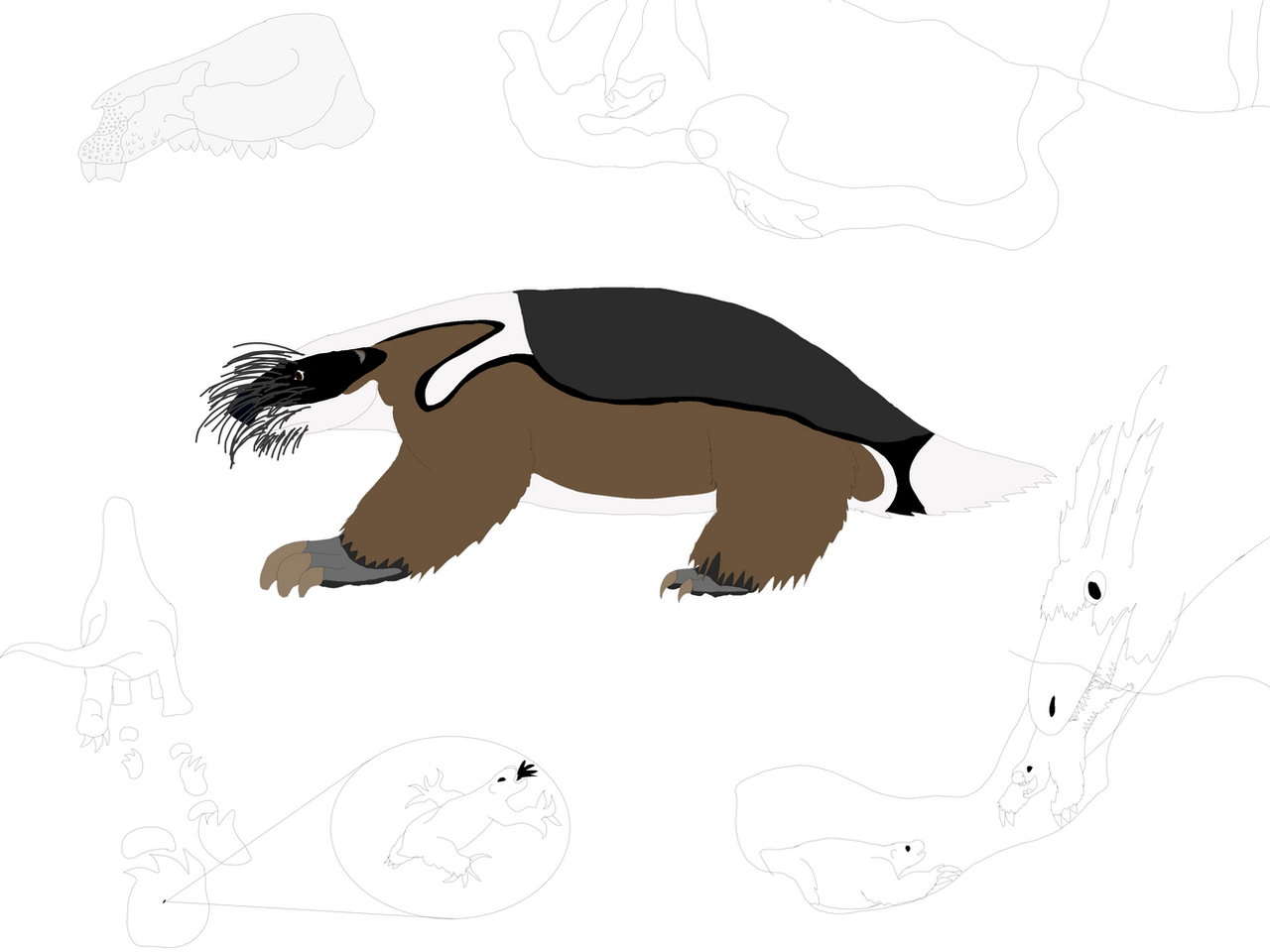HOME | DD
 Dinomaster337 — Paleogaps #10 - Novarcharotalpa
Dinomaster337 — Paleogaps #10 - Novarcharotalpa

#gondwanatheria #paleogaps #mammal #paleoart #paleontology #speculativeevolution #speculativebiology
Published: 2021-12-15 03:40:25 +0000 UTC; Views: 2861; Favourites: 24; Downloads: 0
Redirect to original
Description
Scientific name: Novarcharotalpa micra (“tiny strange ancient mole”)
Height: 5 in
Length: 7.8 in
Weight: 1.8 oz
Habitat: Floodplain mosaic of forests and scrubland
Region: Tanzania (Joka Kubwa Assemblage)
Time period: Late Cretaceous (67-66 mya)
The Joka Kubwa Assemblage, divided between Uganda, Kenya, and Tanzania, has offered paleontologists an unprecedented insight into the prehistoric record of Africa during the Late Cretaceous. With its giant sauropods and array of sauropod hunters, some of which were the very last of their breed, Joka Kubwa has a fascinating picture to paint about the environment, even showing signs of the impact in the Yucatan at the end of the Mesozoic. But as complete of a picture of the dinosaurs that inhabited Joka Kubwa there is, the picture of what its mammals were doing is frustratingly incomplete. It is actually the reason why Ainoa Aguado, a Spanish paleontologist who graduated from the University of Birmingham, partnered up with her graduate mate, Cassedy Beckham, to specifically look into the mammals of the Joka Kubwa assemblage. The expedition launched in 2045 and began searching for fossils immediately. While there were plenty of dinosaurs, they had a frustrating lack of the mammals they were searching for. Just as they were considering giving up, they made an unprecedented and unexpected breakthrough in their search: in 2054, the team discovered a trackway from a giant sauropod, in what appeared to be mudstone from a riverbank. However, it’s what they found in the trackway that excited them the most: buried within one of the hindfoot prints was a mangled skeleton of a small mammal about the size of a star-nosed mole. While an amazing discovery in its own right, it is somewhat of a tragic glimpse into the past, as the mammal was no doubt crushed under the heel of the sauropod, too small to even draw the giant’s attention.
The mammal was described in 2056 and given the name Novarcharotalpa, in reference to its anatomy and the lifestyle it implied. Novarcharotalpa had massive forelimbs and claws, very similar to that of moles or other burrowing mammals, implying a fossorial lifestyle. While most mammals during the Mesozoic likely lived in burrows, Novarcharotalpa shows specializations for a strongly fossorial lifestyle, namely the giant claws and small hindlimbs. It was believed that it was fusiform in its shape, as many fossorial animals are, but due to the condition of the specimen it was unclear. It wasn’t until a second specimen was discovered in 2067; in fact, two new specimens, buried in their burrow, most likely during a flash flood in the wet season, as evidenced by the skeleton of a fish pushed up against one of them. They confirmed the body was indeed fusiform in shape, though not to the degree of more specialized animals such as moles, resembling something more akin to a prairie dog with mole limbs.
However, there was more to be revealed by the new specimens than was initially expected. The skulls of the individuals had rows upon rows of foramina on the rostrum- close to the nose and mouth-, more so than is typical of a mammal, similar to Adalatherium. These were present in the skull of the original specimen, but it was not able to be determined if they were foramina due to the way the skull was crushed. The density of these foramina on the skull suggest that it was covered in a dense coat of whiskers, likely an adaptation to feel around in the dark of their burrows, similar in function to the Eimer’s organ in a star-nosed mole. This suggests this animal was highly specialized for a fossorial lifestyle, possibly to where they were entirely dependent on their burrows for shelter, meaning they potentially had extensive burrowers. However, as there has been little examination of multituberculate and gondwanateran soft tissue, the authors stress this is a tentative speculation.
Based on its cranial and dental anatomy, Novarcharotalpa was a gondwanathere, mammaliaforms that were close relatives of Multituberculates and had specializations for grazing, even potentially being the first mammaliaforms to specialize for grass feeding. However, Novarcharotalpa lacks the hypsodont tooth configuration characteristic of most gondwanatheres, implying it had more general herbivorous habits than other relatives. It has been suggested that Novarcharotalpa may have fed on roots and tubers due to its fossorial lifestyle, but this is unclear. What is likely is that it probably ate ferns, insects, other arthropods, seeds, and/or nuts. It is likely that this mammal was active during the night, as many mammal relatives were during the Mesozoic. Its primary predator would undoubtedly have been Strixoraptor that likely hunted during these times.
Credit to AlphaX9 for the name
Notable specimens:
*2054 (type) specimen: a mangled specimen comprising of most of the skeleton, but it was in very poor condition. Found in a sauropod footprint, which likely was crushed.
*2067 specimens found in their burrow: comprised about 60 percent of the skeletons, the rest likely washed away after repeated flooding events.
























